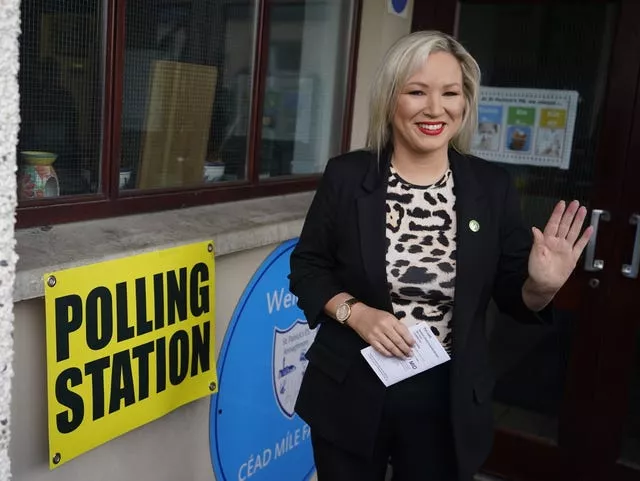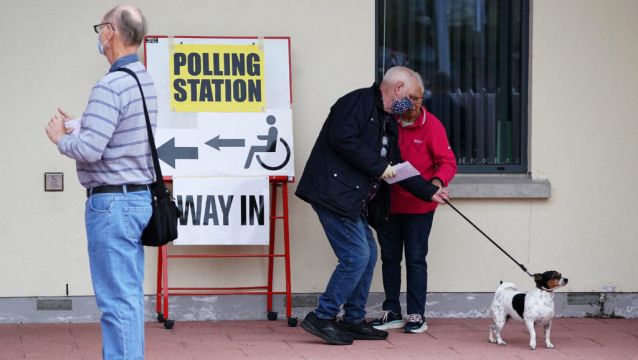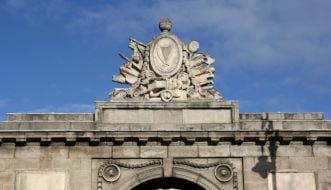Voting in the North’s Assembly election has been described as busy, with an indicative turnout of 31 per cent reported at 5pm.
The Electoral Office of Northern Ireland said the figure was based on returns from 96 per cent of polling stations.
The polling stations will remain open until 10pm on Thursday.
Earlier chief electoral officer, Virginia McVey, said that while the official turnout is not yet known, it seemed to be high across the region.
The process is taking place to elect 90 MLAs to the devolved Stormont Assembly, with 239 candidates running.
Ms McVey said: “We have a new system in place, so we are able to digitally monitor turnout.

“It seems busy across most of Northern Ireland. For 92 per cent of polling stations making an indicative return on turnout at 1pm, it was 15 per cent on average.
“There were lots of polling stations with 20 per cent. It seems high.”
Northern Ireland’s political leaders cast their ballots earlier on Thursday.
Sinn Féin vice-president, Michelle O’Neill, filled out her ballot paper in St Patrick’s primary school in her home village of Clonoe, Co Tyrone, accompanied by party colleague, Linda Dillon.
She posed for photographs with some voters before leaving.
Thirty miles away, the DUP leader, Sir Jeffrey Donaldson, cast his vote at Dromore Central primary school in Co Down.
Unionist rival, Doug Beattie, leader of the Ulster Unionist Party, voted at Seagoe primary school in Portadown, Co Armagh.
He said: “It’s polling day, I don’t think anybody really knows the outcome of this. Things change throughout the day.”

Naomi Long, leader of the cross-community Alliance Party, cast her ballot accompanied by husband, Michael, at St Colmcille’s parochial house in the east Belfast constituency where she was once the MP.
Colum Eastwood, leader of the nationalist SDLP, voted at the Model primary school in Derry accompanied by his wife, Rachael, and his children.
He said: “The people are all powerful today and the people will cast their vote.”
Jim Allister, leader of the TUV, voted early in the morning at Kells and Connor primary school in Co Antrim.

The DUP and Sinn Féin are vying for the top spot in the election, which comes with the entitlement to nominate the next first minister.
A unionist party has always been the biggest in the Assembly since the formation of Northern Ireland in 1921.
While the office of the First and Deputy First Minister is an equal one with joint power, the allocation of the titles is regarded as symbolically important.
The Northern Ireland Protocol has cast a long shadow over the election campaign following the resignation of then-first minister Paul Givan in February in an effort to force the UK government to act over the post-Brexit trading arrangements.
This removed Ms O'Neill from her position as Deputy First Minister, leaving the Executive unable to fully function as ministers were restricted in the actions they could take despite remaining in their posts.
Seats
Five Assembly seats are up for grabs in 18 constituencies, with the overall number of MLAs returned 90. A total of 239 candidates are running.
Similar to the Republic, the North also uses the single transferable vote (STV) proportional representation electoral system.
Counting will start at three centres in Belfast, Jordanstown and Magherafelt on Friday morning with the first results expected the same day.
The DUP won 28 seats at the last Assembly elections in 2017, just ahead of Sinn Féin which returned 27 MLAs.
Next was the SDLP with 12 seats, the Ulster Unionist Party with 10 seats, Alliance with eight seats, the Green Party with two seats while People Before Profit and the TUV had one MLA each.
This year, the DUP has been regarded as playing it safe, running 30 candidates, while Sinn Féin is running 34.
Meanwhile, the UUP is running 27 candidates, the Alliance Party is running 24, the SDLP is fielding 22, TUV is putting up 19 candidates, the Green Party is running 18 and People Before Profit 12, as is Aontu, while the Workers Party is running six candidates and the PUP three.
The Irish Republican Socialist Party (IRSP) and the Socialist Party are each fielding two candidates, while the Northern Ireland Conservatives, Cross Community Labour Alliance (CCLA), Resume NI and Heritage Party are each running one candidate.
There are 24 independent candidates.







